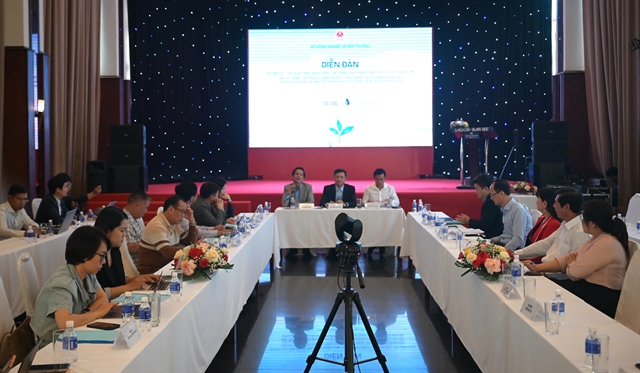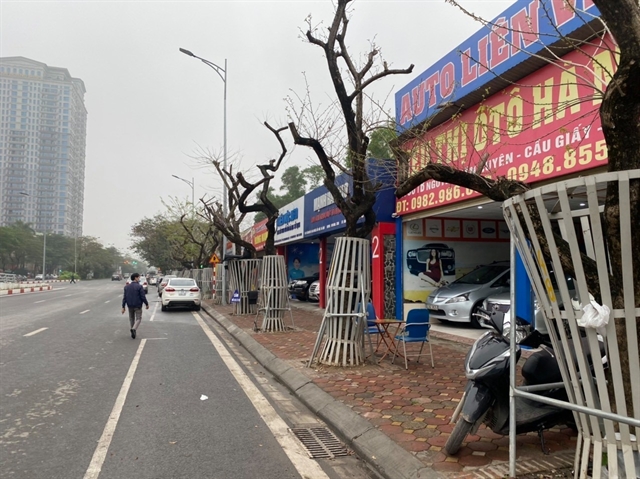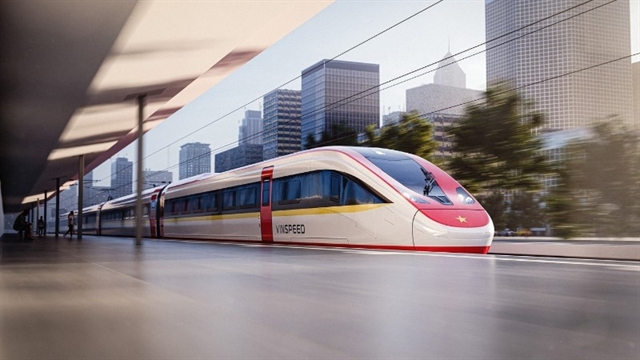 Environment
Environment


|
| Many sưa trees died after being replanted on Nguyễn Văn Huyên Road in Hà Nội's Cầu Giấy District. — VNA/VNS Photo Lê Phú |
HÀ NỘI — Seven rare sưa (dalbergia tonkinensis) trees were reportedly unrooted and killed recently to provide land for traffic construction works in Hà Nội.
The report has raised public concern about the decline in the number of sưa trees in recent years.
Sưa trees are commonly found along Hà Nội’s streets. The tree is ranked as vulnerable on the International Union for the Conservation of Nature’s Red List of Endangered Species. In Việt Nam, sưa wood is highly valued for its quality.
Recently, to build an intersection on Hoàng Quốc Việt and Nguyễn Văn Huyên streets in Cầu Giấy District, the Hà Nội Traffic Construction Investment Management Board sent a written request to the Construction Department to displace some trees in the construction area.
After consideration, the Construction Department issued a license to allow the unrooting and moving of 125 trees in the area.
A total of 110 trees were moved, of which there were 34 sưa trees.
According to the Construction Department, the Hà Nội Traffic Construction Investment Management Board was responsible for felling, moving and replanting trees.
Along with that, the board had to select qualified units to carry out the work to ensure the trees stayed alive.
Notably, the 34 sưa trees, listed as rare and precious timber, had to have their branches pruned when being moved.
The trees had to be protected, re-planted and taken care of.
After a year of replanting, the new trees were to be handed over to a State agency for management.
However, the Hà Nội Traffic Construction Investment Management Board has not yet handed over the trees to the Hà Nội Green Trees Park Co Ltd to take care of as per the request of the Construction Department.
On Nguyễn Văn Huyên Street’s pavement, the rows of sưa trees were re-planted neatly with protective iron fences.
However, some trees have had dry branches without leaves.
Some trees had lost bark on their trunks and branches.
The outward appearance shows that many of the trees are no longer able to grow.
The board hired Thành Công Xanh Consulting and Trading Co., Ltd., to unroot, move and replant the above trees to Nguyễn Văn Huyên Street.
After many checks and assessments, the board found that seven out of the 34 sưa trees died.
The board reported to the Construction Department on the status of the dead trees and proposed they be replaced by other trees and be sold as per State regulations.
Moving trees for building transport works in urban areas is important and the trees could have died during moving and replanting, according to Dr Đặng Văn Hải from the Việt Nam Forestry University.
But there should be a special process for moving and replanting valuable trees such as sưa, Hải said.
“At present, modern science allows for the application of many measures so that trees could take root and have green branches a few days after moving and replanting,” Hải said.
“However, it is necessary to check if the moving unit carried out the right process for cutting branches, stimulating roots, wrapping the body and replanting,” he said.
According to Hải, it is important to check whether there was a malicious human influence that caused the trees to die.
"Because the price of sưa trees is very high. On the black market, a kilogram of timber costs tens of millions of đồng. We should think about people with bad motives who wanted the trees to die to sell,” he said.
The expert asked if Thành Công Xanh Consulting was professional and qualified enough for the job considering many sưa trees were dead after replanting.
From a legal perspective, lawyer Nguyễn Văn Hà from Hà An and Associates Law Firm said street trees were the property of the State and must be protected.
A proper investigation into the deaths of the sưa trees is needed, Hà said, adding that criminal charges could be in order.
In addition, the individuals or units that made the trees die might also have to compensate the Government financially. The sanctions aimed to avoid the same incident with the trees in the future, the lawyer said. — VNS




